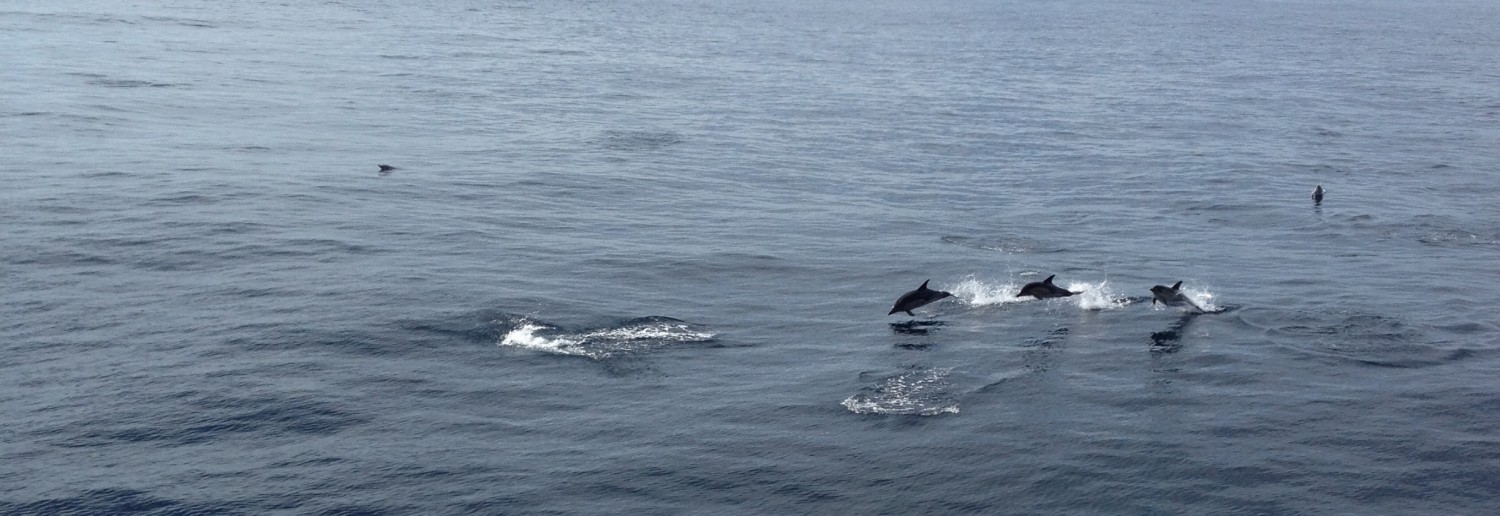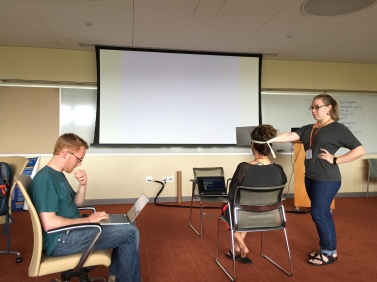As with many things in life, fieldwork often doesn’t go as planned. But this is easy to forget when plans are made on tight timelines – we need everyone (including mother nature) to accommodate our schedule. As a marine scientist, nearly all of my fieldwork requires coordinating with vessels to reach different parts of the ocean. Sometimes these vessels are small, such as a fishing boat not meant to head very far from shore, but more often my work takes me out to sea overnight for which larger ships must be contracted.
There are many, many moving pieces (literally and figuratively) that must be considered when organizing a voyage on a ship. Everyone on board has a job, and for the most part, I always assume that if they do their job and I do mine everything will go according to plan.
But of course that is a ridiculous thing to assume.
Part 1: The sewage tank delay
For the first two weeks of the trip we sat at the dock in Pascagoula because sewage holding tank needed to be patched, painted, and tested. Not only was this problematic because it meant that there was a issue with the ship and we were losing valuable days at sea, but it also meant that I was on my own in small-town Mississippi until we got underway.
At first I stayed hopeful that our departure was imminent; I was able to hitch a ride into town with the crew for most meals, and I took some time to organize my mooring gear and explore the abandoned Navy Base where the ship was docked. Turns out abandoned Navy Bases are only good for a few hours of exploring…so by day five I was desperate to get a rental car so I didn’t have to rely on everyone else’s schedule. Thankfully, after calling three offices I finally found a car and was on my own (morale improved considerably).
The next week and change consisted of me hunting down high-speed wifi and southern food. I quickly learned coffee shops are hard to come by on the Gulf Coast, but I tried to make an adventure out of it. I saw two wild alligators, ate more gulf shrimp than I can count, learned about the history of the Gulf Coast, Mardi Gras, and the damage (and subsequent rebuilding) that followed Hurricane Katrina. I avoided a flash flood, tried “cajun sushi”, and consumed more BBQ chicken than someone who considers themselves a vegetarian should admit…

Study break at the beach in Biloxi, MS
So it wasn’t all misery, but still I was ready to get going. On day 14, just when I was about to give-up and fly back to Oregon, we finally got the OK to cast off from the pier and head out to sea. The next morning we arrived on the site of NRS06, and even though it took all day to complete the hydrophone swap I was thrilled. Things were finally looking up – one hydrophone in the water, one to go, and we were on our way out of the gulf!

Preparing NRS06 for deployment
Alas, it was too good to be true.
Part 2: The weather delay
Even when everyone on board does their job and the ship is fully functional, weather remains out of our control. A storm system was hovering right in our path north, and by the time we reached the location of NRS07 the seas were too big and choppy to complete the swap. For the safety of the ship and everyone on board, we had to get away from the storm. So we continued on our journey north, battling our way out of high wind and waves. If you’ve ever spent time on a ship before, you know that being tossed around by the sea is not very much fun. Even at top speed we could not travel quickly, and a full week into the journey we hadn’t even crossed the Mason-Dixon line.

Sunset at sea after the storm passed
On day 22 (a full week after I was supposed to be back in Oregon already) the weather finally improved. I had come to terms with the delays and was ready to get to Woods Hole say hello to my friends and colleagues there, and then head home. But we couldn’t catch a break. In the middle of the night, there was a problem with the engine and we lost control of one of the screws (there are usually two propelling the boat). With only half power and still hundreds of miles to go, a decision was made to head to the nearest port for repairs. Then, about 4 hours later, a small smoky fire was discovered in the engine room and the ship sprung into action to control the damage. Thankfully no one was hurt, and we spent the next 24 hours slowly making our way towards Charleston, SC.
Since we already passed both NRS mooring sites, my job onboard was essentially finished. So, already over a week behind schedule to return to Oregon, I decided to cut my losses and leave the ship in Charleston. I booked the latest flight I could find for the next day.
The dock we were scheduled to tie up at in Charleston, SC was up the Cooper River, so a pilot and tug boat would have to escort the ship to the pier. Keeping with the trend of the voyage, our trip up the river was delayed by a few hours (for reasons unbeknownst to me…I didn’t even ask). These hours were the difference between me being able to fly back to Oregon that day or needing to wait for the next morning. I couldn’t take no for an answer and knowing that our pilot for the day would have to be shuttled to the ship from shore, I asked if I could hitch a ride back to land in his place. Luckily my wish was granted and a few hours later I was sitting in the Charleston airport waiting for my flight home. Ironically, my flight into Portland met tailwinds at 34,000 ft and landed almost an hour early.

My view from the pilot boat after leaving the Gunter
As a scientist it’s easy to take for granted all of the pieces that go into a trip to sea. It is not news to me that often problems arise and plans must be change. I used to sail with a captain that would tell us, “this is the plan we will deviate from”. Although, collectively, I’ve spent over a year of my life at sea, before this trip I had not found myself in the midst of so many subsequent set-backs. I could say “well that really sucked” and close the books and be done with it. Or I could embrace the tragic comedy of Murphy’s Law and appreciate that I accomplished half of my scientific mission, made it home safely, and now only have 7 states to visit before I’ve been to all 50.


















